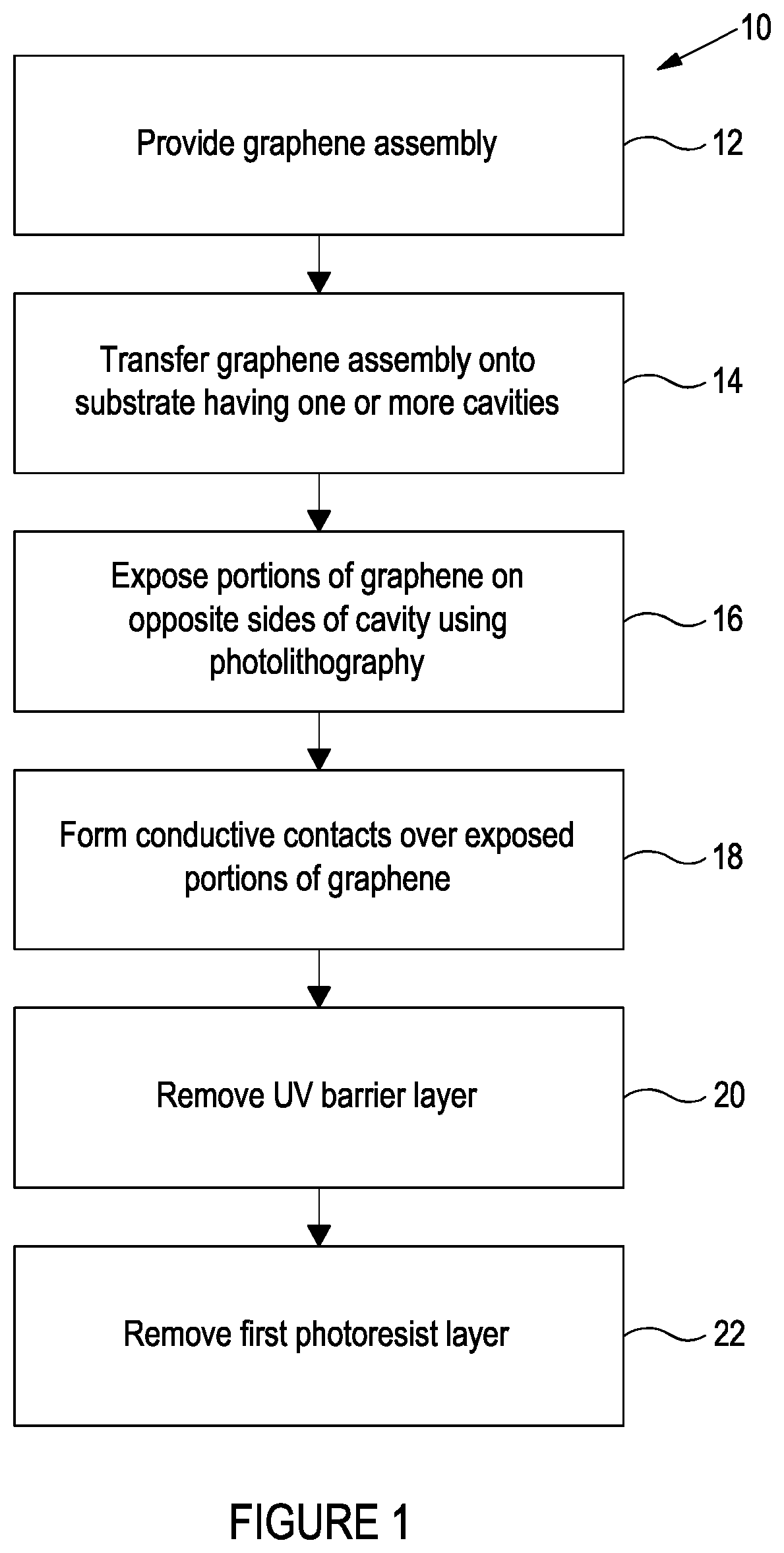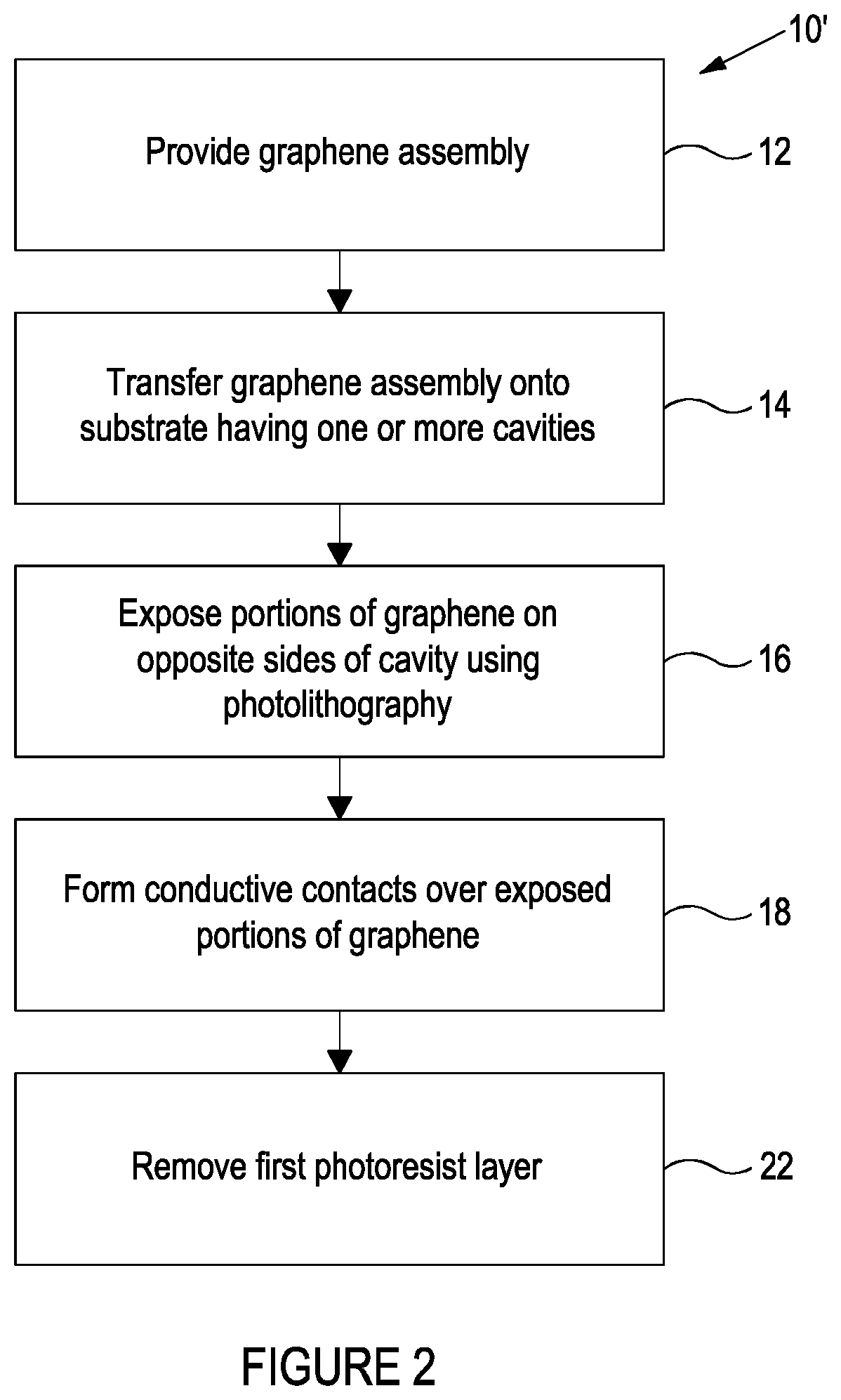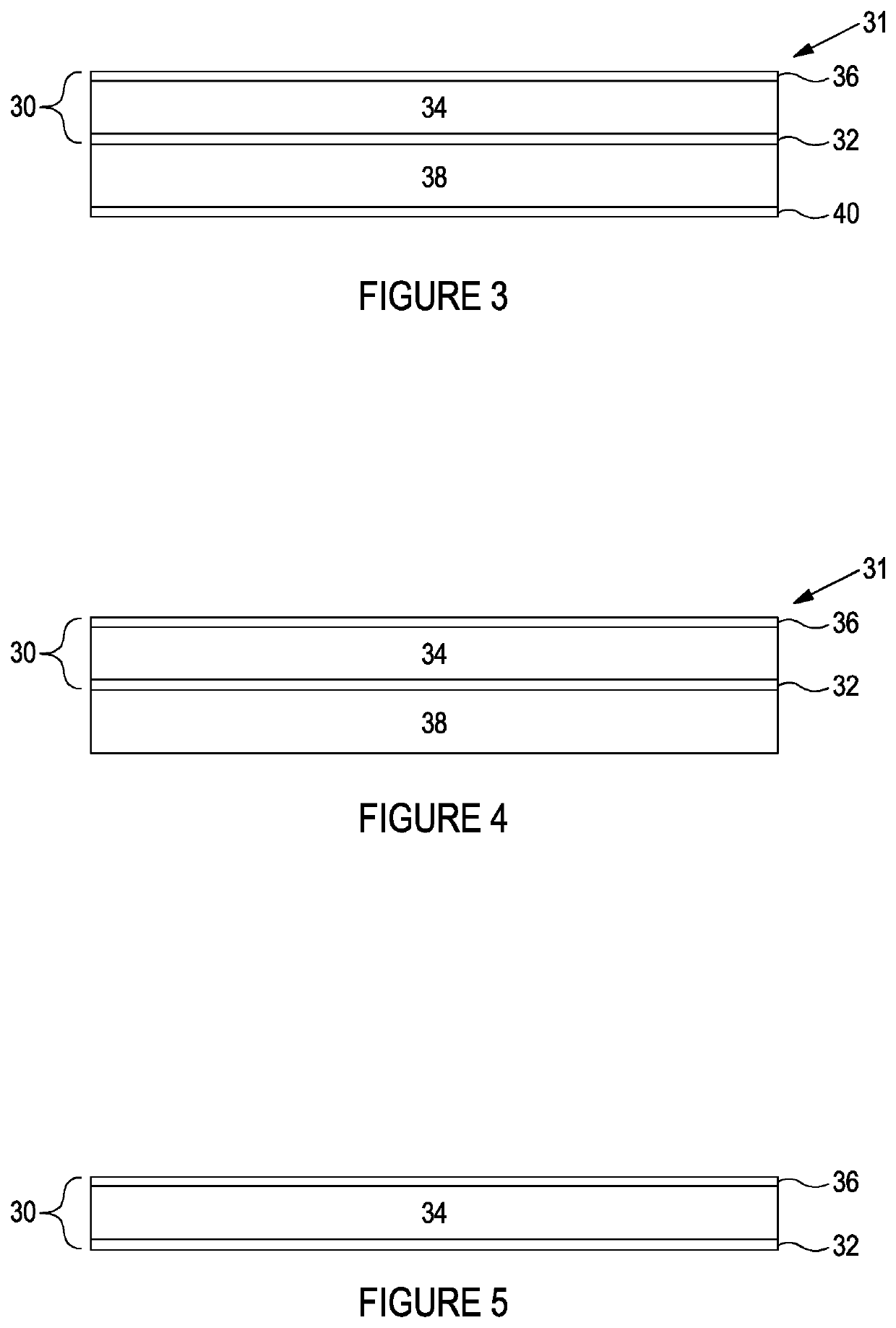Methods of manufacturing a graphene-based device
a graphene-based device and manufacturing method technology, applied in the direction of chemically reactive gases, crystal growth processes, instruments, etc., can solve the problems of large scale, bulky and expensive pid devices, and damage to public health, and achieve the effect of increasing mechanical strength, reducing production costs, and reducing production costs
- Summary
- Abstract
- Description
- Claims
- Application Information
AI Technical Summary
Benefits of technology
Problems solved by technology
Method used
Image
Examples
Embodiment Construction
[0092]A method 10 of manufacturing a graphene-based device in accordance with an embodiment of the present invention is set out in FIG. 1. The method 10 comprises providing 12 a graphene assembly comprising one or more layers of graphene, a first photoresist layer disposed on the one or more layers of graphene, and an ultra-violet (UV) barrier layer disposed on the first photoresist layer on an opposite side to the one or more layers of graphene. The graphene assembly is transferred 14 onto a substrate comprising at least one cavity so that the one or more layers of graphene traverse the at least one cavity. Photolithography is used at step 16 to expose portions of the one or more layers of graphene on opposite sides of the at least one cavity and conductive contacts are formed at step 18 over the exposed portions of graphene. The UV barrier layer is then removed at step 20 and the first photoresist layer is removed at step 22.
[0093]A specific method of manufacturing a graphene-base...
PUM
 Login to View More
Login to View More Abstract
Description
Claims
Application Information
 Login to View More
Login to View More - R&D
- Intellectual Property
- Life Sciences
- Materials
- Tech Scout
- Unparalleled Data Quality
- Higher Quality Content
- 60% Fewer Hallucinations
Browse by: Latest US Patents, China's latest patents, Technical Efficacy Thesaurus, Application Domain, Technology Topic, Popular Technical Reports.
© 2025 PatSnap. All rights reserved.Legal|Privacy policy|Modern Slavery Act Transparency Statement|Sitemap|About US| Contact US: help@patsnap.com



